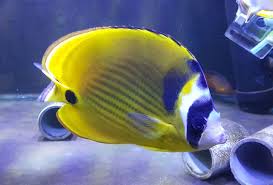
The world of hair fashion has evolved significantly in recent years, with many individuals opting for bold and vibrant hair colors as a means of self-expression. Dyed hair colors, especially unconventional shades like neon and pastel, often evoke a range of reactions and attitudes from society. In this article, we’ll delve into how people perceive and react to dyed hair colors, as well as the societal implications.
**1. Positive Reactions:**
**a. Empowerment:** Many people view dyed hair colors as a form of empowerment. It allows individuals to express their unique personalities and creativity, which can be inspiring to others.
**b. Fashion Forward:** Dyed hair colors are often associated with a fashion-forward mindset. They can convey a sense of trendiness and a willingness to embrace change.
**c. Confidence:** Those who confidently rock unconventional hair colors are often admired for their self-assuredness. This can inspire others to be more confident in their own choices.
**2. Negative Reactions:**
**a. Stereotypes:** Some individuals may still hold onto outdated stereotypes about unconventional hair colors, associating them with rebellion or non-conformity.
**b. Professional Environment:** In certain professional settings, vibrant hair colors may not conform to dress codes. This can lead to concerns about employability or workplace acceptance.
**c. Generational Gap:** There may be a generational gap in perceptions, with older generations being less accepting of colorful hair, while younger generations see it as a norm.
**3. Societal Implications:**
**a. Diversity and Inclusivity:** Embracing a variety of hair colors contributes to a more diverse and inclusive society. It challenges conventional beauty standards and promotes acceptance of individuality.
**b. Breaking Stereotypes:** Dyed hair challenges stereotypes about appearance, demonstrating that one’s character and abilities should not be judged based on their hair color.
**c. Cultural Acceptance:** In some cultures, colorful hair may be celebrated, while in others, it may still be met with resistance. Exploring these cultural differences can lead to greater understanding and acceptance.
**4. Promoting Self-Expression:**
Ultimately, dyed hair colors serve as a powerful form of self-expression. They allow individuals to showcase their creativity, personality, and identity. Encouraging a society that respects these choices fosters a more inclusive and open-minded environment.
**5. Conclusion:**
People’s reactions and attitudes towards dyed hair colors are diverse and complex. While some may embrace these vibrant hues as a symbol of empowerment and self-expression, others may still hold onto traditional views. Nevertheless, the trend of colorful hair is here to stay, promoting individuality, diversity, and a more inclusive society. It encourages everyone to embrace their unique selves, regardless of societal norms or expectations.










